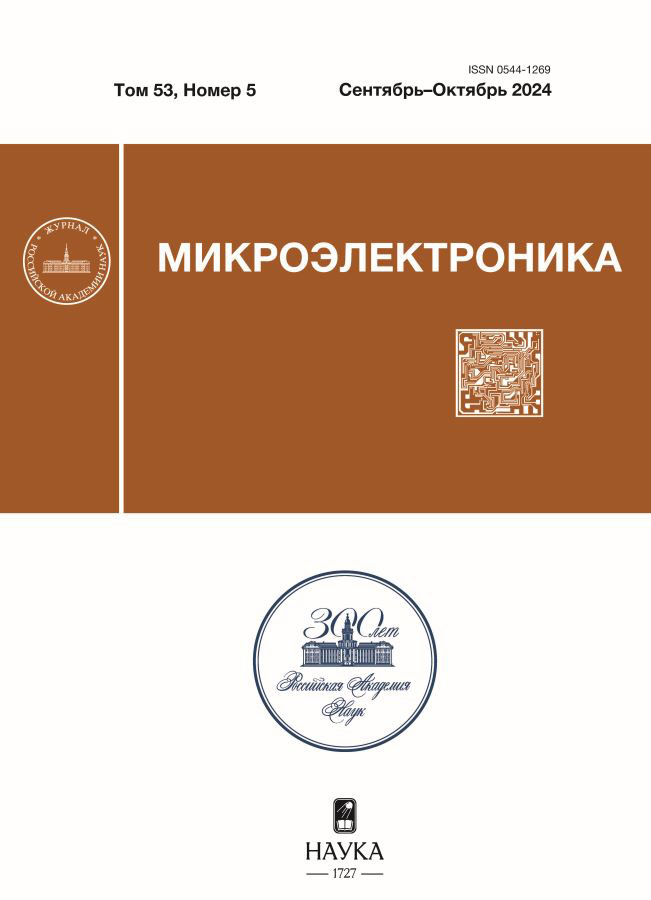Parameters matching of the thermoelectric system parameters for cooling heat-loaded electronics elements
- 作者: Vasil’ev Е.N.1
-
隶属关系:
- Institute of Computational Modelling, Siberian Branch, Russian Academy of Sciences
- 期: 卷 53, 编号 5 (2024)
- 页面: 407-412
- 栏目: MODELING
- URL: https://kld-journal.fedlab.ru/0544-1269/article/view/681356
- DOI: https://doi.org/10.31857/S0544126924050068
- ID: 681356
如何引用文章
详细
A thermoelectric cooling and thermal control system for electronic devices is considered. Based on a mathematical model using the operating characteristics of a serial thermoelectric module as initial data, calculations of the energy characteristics of a thermoelectric cooling system were carried out, taking into account its thermal resistances. The calculation results are presented in the form of diagrams, which allow for a coordinated selection of the system’s thermal resistances, ensuring the specified values of the cooling capacity and temperature difference.
全文:
作者简介
Е. Vasil’ev
Institute of Computational Modelling, Siberian Branch, Russian Academy of Sciences
编辑信件的主要联系方式.
Email: ven@icm.krasn.ru
俄罗斯联邦, Krasnoyarsk
参考
- Martyushev S.G., Sheremet M.A. Two factors affecting the cooling rate of fuel elements in sealed units // Mikroelektronika. 2014. V. 43. No 5. P. 390–398. doi: 10.7868/S0544126914050056
- Boutina L., Bessaih R. Numerical simulation of mixed convection air-cooling of electronic components mounted in an inclined channel // Applied Thermal Engineering. 2011. V. 31. P. 2052–2062. https://doi.org/ 10.1016/j.applthermaleng.2011.03.021
- Glinskii I.A., Zenchenko N.V. Computer simulation of the heat distribution element for high-power microwave transistors // Russian Microelectronics. 2015. V. 44, No 4. P. 236–240. doi: 10.1134/S1063739715040058
- Zuev S.M., Prokhorov D.A., Maleev R.A., Debelov V.V., Lavrikov A.A. Application of Graphene in The Cooling System of a Personal Electronic Computer // Russian Microelectronics. 2021. V. 50. No 6. P. 404–411. https://doi.org/10.1134/S1063739721050097
- Chang Y.W., Chang C.C., Ke M.T., Chen S.L. Thermoelectric air-cooling module for Chang electronic devices // Applied Thermal Engineering. 2009. V. 29. № 13. P. 2731–2737. https://doi.org/10.1016/j.applthermaleng.2009.01.004
- Shtern M.Yu., Shtern Yu.I., Sherchenkov A.A. Thermoelectric systems for providing thermal modes of computer technology // Izvestija Vysshykh Uchebnykh Zavedenii. Elektronika. 2011. No 4. P. 30–38.
- Vasil’ev E.N. Thermoelectric cooling of heat-loaded electronics // Russian Microelectronics. 2020. V. 49. No 2. P. 123–131. https://doi.org/10.1134/S1063739720020092
- Zagorodnov A.P., Yakunin A.N. Precision thermostatting of a resonator on volume acoustic waves. Modeling and synthesis of a control system // Zhurnal Radioelektroniki. 2013. No 10. P. 1–14, http://jre.cplire.ru/iso/oct13/12/text.pdf
- Vasil’ev E.N. On the importance of thermal resistances of the cooling system when choosing a thermoelectric module // Technical Physics. 2023. V. 68. No 5. P. 574–579, https://doi.org/10.21883/tp.2023.05.56062.13-23
- Vasil’ev E.N. Calculation of the thermal resistance of a heat distributer in the cooling system of a heat-loaded element // Technical Physics. 2018. V. 63. No 4. P. 471–475. https://doi.org/10.21883/JTF.2018.04.45714.2312
- Vasil’ev E.N. Determination of thermoelectric cooling modes of heat-loaded electronics // Russian Microelectronics. 2020. V. 49. No 4. P. 278–284, https://doi.org/10.31857/S0544126920030072
- Vasil’ev E.N. Optimization of thermoelectric cooling regimes for heat-loaded elements taking into account the thermal resistance of the heat-spreading system // Technical Physics. 2017. V. 62. No 9. P. 1300–1306, https://doi.org/10.1134/S1063784217090286
- Vasil’ev E.N. Calculation and optimization of thermoelectric cooling modes of thermally loaded elements // Technical Physics. 2017. V. 62. No 1. P. 90–96. https://doi.org/10.21883/JTF.2017.01.44022.1725
- https://crystalltherm.com/upload/iblock/5af/1knj372x6ho3v82cwzufypmaktsqm4ph/TM_S_199_14_11_L2_SPEC.pdf. Accessed September 13, 2024.
- http://kryotherm.ru/ru/assembly-instructions.html. Accessed September 13, 2024.
- http://ecogenthermoelectric.com/ru/texnicheskaya-podderzhka.html. Accessed September 13, 2024.
- Vasil’ev E.N. The Effect of thermal resistances on the coefficient of performance of a thermoelectric cooling system // Technical Physics. 2021. V. 66. No 6. P. 815–819. https://doi.org/10.1134/S1063784221050248
补充文件














